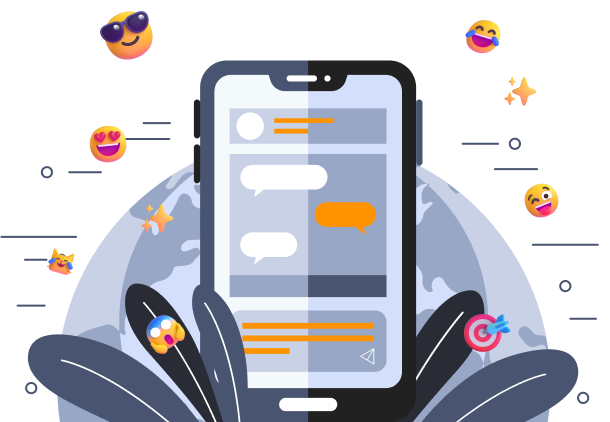
About
<h1><span style="font-weight: 400;">Use Virtual Reality to Teach Navigation Skills in Online Maritime Courses In Take My Class Online</span></h1>
<p><spa
Read More<h1><span style="font-weight: 400;">Use Virtual Reality to Teach Navigation Skills in Online Maritime Courses In Take My Class Online</span></h1>
<p><span style="font-weight: 400;">For differently-abled individuals, traditional online education can present numerous challenges that </span><a href="https://takemyclassonline.net/"><span style="font-weight: 400;">Take My Class Online</span></a><span style="font-weight: 400;"> hinder their ability to engage fully with course materials. However, the integration of Artificial Intelligence (AI) offers innovative solutions to enhance inclusivity and create a more equitable learning experience. This article explores the impact of AI on improving inclusivity in for differently-abled students, examining the tools and strategies that can empower these learners.</span></p>
<p><span style="font-weight: 400;">Differently-abled students may face various barriers in online learning, including:</span></p>
<p><span style="font-weight: 400;">Physical Limitations: Students with mobility impairments may struggle to interact with traditional interfaces, making navigation and engagement difficult.</span></p>
<p><span style="font-weight: 400;">Visual Impairments: For students who are blind or have low vision, standard text-based materials can be inaccessible, limiting their ability to consume information.</span></p>
<p><span style="font-weight: 400;">Hearing Impairments: Deaf or hard-of-hearing students may find it challenging to engage in video-based content without appropriate captions or transcripts.</span></p>
<p><span style="font-weight: 400;">Cognitive Challenges: Students with learning disabilities or cognitive impairments may need tailored approaches to information processing and comprehension.</span></p>
<p><span style="font-weight: 400;">By understanding these challenges, educators can leverage AI technologies to address the specific needs of differently-abled learners.</span></p>
<h3><span style="font-weight: 400;">1. Personalized Learning Experiences</span></h3>
<p><span style="font-weight: 400;">AI can facilitate personalized learning by adapting content to meet individual needs. Through machine learning algorithms, educational platforms can analyze students' interactions and performance data to recommend tailored resources and activities. For instance, AI systems can identify areas where a student struggles and suggest additional materials, exercises, or alternative formats that cater to their learning style.</span></p>
<h3><span style="font-weight: 400;">2. Natural Language Processing (NLP)</span></h3>
<p><span style="font-weight: 400;">Natural Language Processing (NLP) is a subset of AI that enables machines to understand and respond to human language. NLP can enhance accessibility in several ways:</span></p>
<ul>
<li style="font-weight: 400;"><span style="font-weight: 400;">Text-to-Speech and Speech-to-Text: For students with visual impairments, text-to-speech technology can convert written content into spoken words, making materials accessible. Conversely, speech-to-text tools allow students with hearing impairments to participate in discussions and activities by transcribing spoken words into written text.</span></li>
<li style="font-weight: 400;"><span style="font-weight: 400;">Real-time Captioning: AI-driven transcription services can provide live captions during lectures or </span><a href="https://takemyclassonline.net/nurs-fpx-4040-assessment-3-annotated-bibliography-on-technology-in-nursing/"><span style="font-weight: 400;">nurs fpx 4040 assessment 3</span></a><span style="font-weight: 400;"> discussions, ensuring that deaf or hard-of-hearing students can access spoken content in real time. This fosters a more inclusive classroom environment.</span></li>
</ul>
<h3><span style="font-weight: 400;">3. Adaptive Interfaces</span></h3>
<p><span style="font-weight: 400;">AI can create adaptive user interfaces that respond to individual needs. For example, platforms can offer customizable layouts, font sizes, color contrasts, and navigation options to accommodate various disabilities. Students can adjust the interface according to their preferences, improving their overall user experience and engagement.</span></p>
<h3><span style="font-weight: 400;">4. Intelligent Tutoring Systems</span></h3>
<p><span style="font-weight: 400;">AI-powered intelligent tutoring systems can provide targeted support for differently-abled students. These systems use algorithms to assess a learners strengths and weaknesses, delivering personalized feedback and instruction. For instance, a student with dyslexia may benefit from a tutoring system that offers phonetic assistance and visual aids to enhance reading comprehension.</span></p>
<h3><span style="font-weight: 400;">5. Gamification and Interactive Learning</span></h3>
<p><span style="font-weight: 400;">AI can facilitate gamification in online learning, making educational experiences more engaging for all students, including those with disabilities. Interactive elements such as quizzes, simulations, and game-based learning can help maintain motivation and focus. For differently-abled learners, gamification can be tailored to address specific challenges, providing a fun and effective way to grasp complex concepts.</span></p>
<h3><span style="font-weight: 400;">6. Virtual Reality (VR) and Augmented Reality (AR)</span></h3>
<p><span style="font-weight: 400;">AI-driven VR and AR technologies offer immersive learning experiences that can benefit differently-abled students. For example, students with physical disabilities may find it easier to engage in virtual simulations that replicate real-world scenarios. AR can provide overlays of information that enhance understanding without requiring extensive physical interaction with materials.</span></p>
<p><span style="font-weight: 400;">To effectively integrate AI tools and solutions in online learning for differently-abled students, educational institutions can follow several key strategies:</span></p>
<h3><span style="font-weight: 400;">1. Collaborate with Stakeholders</span></h3>
<p><span style="font-weight: 400;">Engaging with </span><a href="https://takemyclassonline.net/nurs-fpx-4050-assessment-2-ethical-and-policy-factors-in-care-coordination/"><span style="font-weight: 400;">nurs fpx 4050 assessment 2</span></a><span style="font-weight: 400;"> students, educators, and disability advocates during the design and implementation of AI solutions is crucial. Their insights can help identify specific needs and preferences, ensuring that the technologies developed are genuinely beneficial.</span></p>
<h3><span style="font-weight: 400;">2. Prioritize Accessibility Standards</span></h3>
<p><span style="font-weight: 400;">When adopting AI tools, institutions must adhere to established accessibility standards, such as the Web Content Accessibility Guidelines (WCAG). Ensuring that platforms and resources comply with these guidelines helps create a more inclusive environment for all learners.</span></p>
<h3><span style="font-weight: 400;">3. Provide Training and Support</span></h3>
<p><span style="font-weight: 400;">Educators and students alike may need training to effectively use AI tools. Institutions should offer professional development for educators to familiarize them with the capabilities of AI technologies and how to incorporate them into their teaching practices. Additionally, providing resources for students to learn how to navigate these tools can enhance their experience.</span></p>
<h3><span style="font-weight: 400;">4. Continuously Evaluate and Iterate</span></h3>
<p><span style="font-weight: 400;">The integration of AI in online learning should involve continuous evaluation and feedback loops. Institutions can gather data on student engagement and performance, adjusting AI systems and educational approaches as needed. Regular assessments will help identify areas for improvement and ensure that the technologies remain effective and relevant.</span></p>
<h3><span style="font-weight: 400;">5. Advocate for Policy Changes</span></h3>
<p><span style="font-weight: 400;">Educational institutions can advocate for policies that support the integration of AI technologies in ways that promote inclusivity. Collaboration with policymakers can lead to funding opportunities and initiatives that prioritize accessibility in education.</span></p>
<h2><span style="font-weight: 400;">Conclusion</span></h2>
<p><span style="font-weight: 400;">By leveraging personalized learning experiences, adaptive technologies, and innovative solutions, educational institutions can create environments that accommodate diverse needs and empower all learners. As the landscape of online education continues to evolve, embracing AI-driven approaches will be crucial for fostering equitable access to </span><a href="https://takemyclassonline.net/nurs-fpx-4060-assessment-1-health-promotion-plan/"><span style="font-weight: 400;">nurs fpx 4060 assessment 1</span></a><span style="font-weight: 400;"> education.</span></p>
<p></p>











Tricks of the mind 🤔🤔